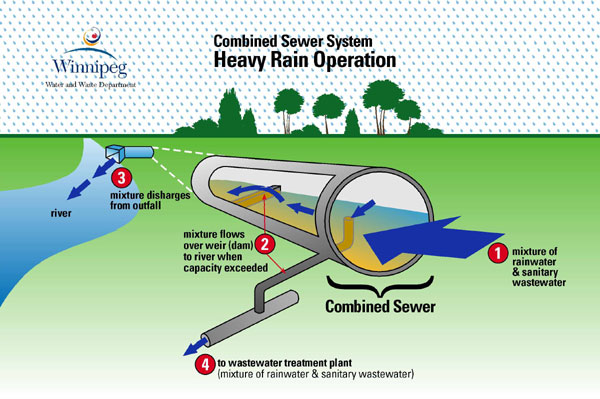Difference between revisions of "Practitioner's Tool / Combined Sewers"
(Created page with "200px Combined sewers are designed to collect stormwater and wastewater in the same pipe. In most cases, the pipe is connected to a central se...") |
|||
| (2 intermediate revisions by the same user not shown) | |||
| Line 14: | Line 14: | ||
| − | ''[[Practitioner's Tool / | + | ''[[Practitioner's Tool / Sewers Comparison|Back to Sewers Comparison]] |
Latest revision as of 22:53, 22 November 2016
Combined sewers are designed to collect stormwater and wastewater in the same pipe. In most cases, the pipe is connected to a central sewage treatment plant where the water is treated before it is discharged into a river or nearby water body. During excessive rainfalls, the volume of water flowing through rises beyond the capacity of the sewer system. In that case, the system is designed to discharge combined sewer overflow directly into streams or nearby rivers. This is a major contributor of pollutants to water bodies because this overflow contains not only stormwater but also untreated wastewater from homes and industries. It could contain chemicals and toxins that are harmful to the human body when ingested.
A combined sewer overflow system acts like a safety valve that prevents backflow of wastewater and flooding. Seasonal changes should be taken into account when designing a combined sewerage system.
Some of the advantages of having a combined sewerage system include the following:
- It treats both sewer and storm wastewater at the same time.
- It is less expensive to install than a separate sewer system.
- There is less connection confusion because there is only one system.
The major disadvantage of a combined sewer system is that on rainy days, overflow will cause pollution of nearby bodies of water, and frequent dry days will cause the pipes to dry up and require frequent cleaning.

